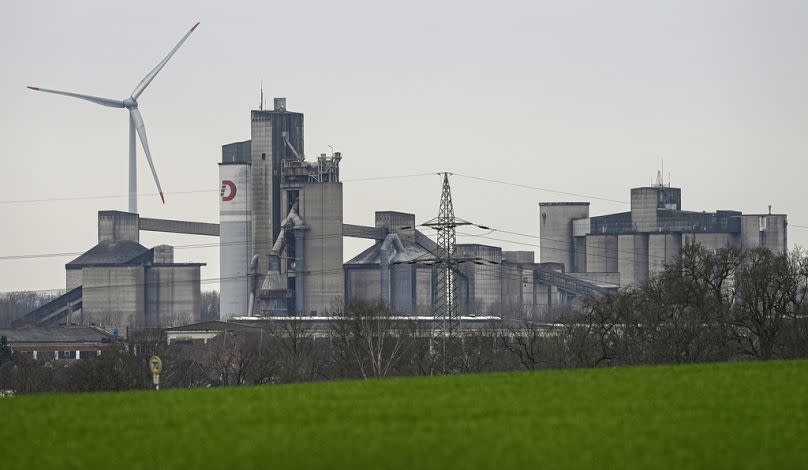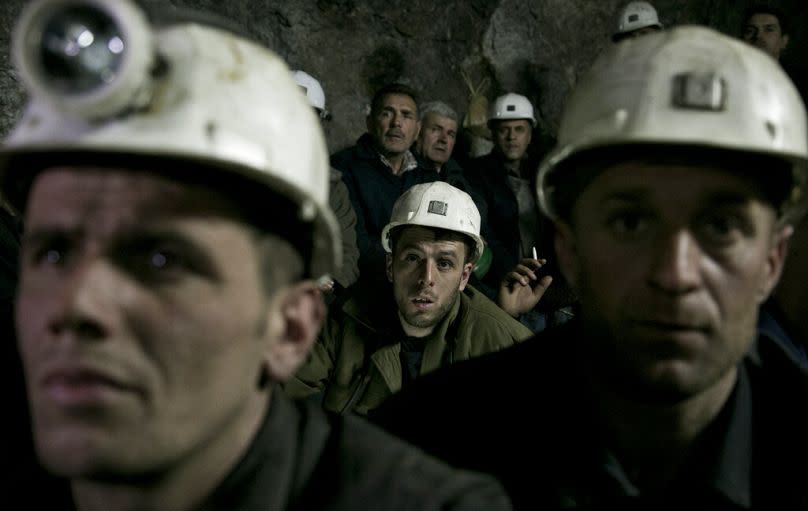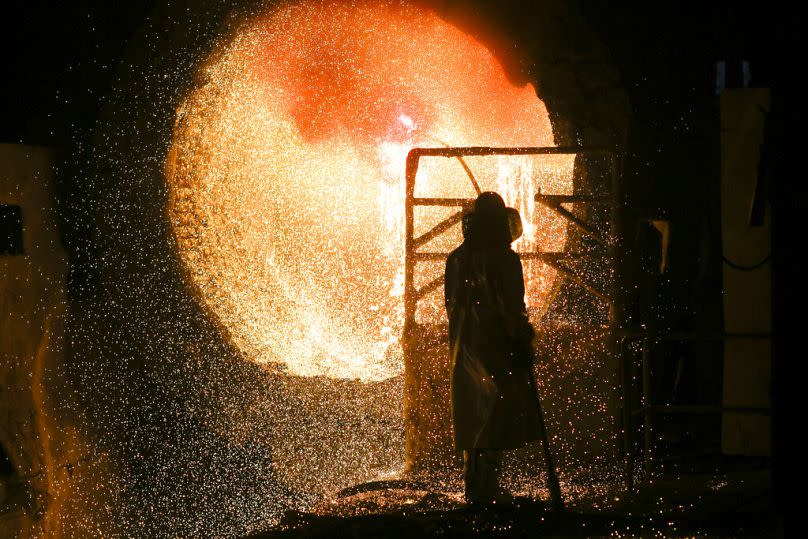Long duration energy storage is an imperative for Europe's industrial decarbonisation

For the last two hundred years, European industry has depended on fossil fuels.
Despite successive revolutions to move to less polluting sources of power and create more sustainable industry — from coal to gas, gas to nuclear energy, and now renewables — Europe remains reliant on burning hydrocarbons for economic growth.
The European industrial sector is responsible for 24% of global greenhouse gas emissions. Even using renewable energy sources — from wind to solar — are not without their challenges as their intermittent nature is not compatible with the needs of industry.
That is the bad news.
The good news is – it does not have to be this way.
The ambition is there, and it's happening
On 6 February, the European Commission recommended that the EU should reduce its net greenhouse gas emissions by 90% by 2040, compared to 1990 levels.
In announcing this new ambition, the European Commission made clear that decarbonising the industrial and agricultural sectors must be a crucial focus of our efforts to deliver a sustainable and globally competitive economy in Europe.
This is a bold new ambition for the bloc and is matched by business, with 75% of European CEOs implementing initiatives to reduce their company’s carbon footprint, according to PWC’s 27th Annual Global CEO survey.

We are seeing major industry actors adopting a host of measures to lower emissions; including energy efficiency improvements, adopting renewable energy sources, scaling availability of alternative fuels and conducting lifecycle assessments.
Despite these efforts, our ability to decarbonise industry has been held back by the intermittent nature of wind and solar.
However, a crucial solution has emerged capable of accelerating Europe’s net zero journey and eliminating 65% of industrial emissions by 2040.
What is long duration energy storage?
Long duration energy storage (LDES) technologies can reduce emissions by storing renewable energy for durations ranging from several hours to days, weeks and even seasons, making them ideal for industrial decarbonisation.
They span electrochemical, mechanical, thermal, and chemical solutions.
These LDES technologies are proven. Companies are producing them today and industry needs them now to reduce greenhouse gas emissions by 90% in 2040.
Replacing fossil fuels with renewable energy and LDES could remove 8 billion tonnes of industrial CO2 emissions, according to research by our LDES Council experts.
The missing piece — the critical piece — is a regulatory regime enabling their economic viability to help these technologies scale and drive change.

Electrochemical storage, primarily in the form of batteries, is one of the most widely recognised forms of LDES.
Here, emerging technologies like flow batteries are particularly well-suited for long-duration storage due to their ability to independently scale both energy (the amount of electricity stored) and power (the rate of electricity discharge).
In Europe, flow battery companies and hydrogen-based companies are harnessing these technologies for data centres and backup power applications.
Europe's largest energy storage facility begins operations in Belgium
‘A very Finnish thing’: Big sand battery to store wind and solar energy using crushed soapstone
These data centres represent approximately 1.5% of EU electricity consumption today and could reach 3.2% of all power consumed in the EU by 2030.
Capturing solar and wind generation, and coupling that power with long-duration energy storage, guarantees clean power is available for these large energy consumers daily.
Mining operations to benefit greatly?
If data centres provide one test case for LDES solutions, then mining and off-grid energy generation give us another.
Mechanical solutions which store energy in the form of potential or kinetic energy, and thermal solutions which convert renewable energy into heat, can help reduce the emissions profile of large European industries like chemical manufacturing and meet energy demand in resurgent segments like mining.
There are roughly 50 mines expected to open across Europe by 2030 to provide critical minerals that are necessary for aspects of the energy transition. Unless those operations are powered by renewable energy and supported by LDES or can run on clean heat, then the mining renaissance will mean a surge in greenhouse gas emissions.

LDES can be of immense help in decreasing emissions and electrifying mining operations by deploying mechanical, electrochemical or chemical solutions, and would also save money for the companies using them while providing a security blanket for mines by providing backup power systems in case of emergency.
One case study for a mine in Australia indicated that off-grid mines could save 76% of their operating expenses by switching to renewable power and LDES and achieve full decarbonisation at a savings of $609 per tonne of CO2 abated.
The chemicals and food processing industries — significant contributors to Europe's industrial emissions — can also benefit from LDES.
The industries primarily use low-to-medium temperature heat, which can be easily electrified. In California, a potato chip manufacturer used a 24-hour thermal LDES solution paired with an e-boiler to eliminate its scope 1 and 2 emissions.
By harnessing cheap renewable energy and moving away from gas, companies can lower their exposure to volatility in the gas market to produce cheaper and greener food.
Similarly, in a German chemical factory, combining an electric boiler with LDES to produce steam instead of a natural gas boiler can reduce the cost of electrification by half. All the while removing polluting fossil fuels causing significant risks to local air and water quality and sustaining the operating lifetime of existing factories.
What else can LDES do?
While LDES can decarbonise these electrical applications today, the possibilities for tomorrow are vast.
Industrial heat processes are a major contributor to greenhouse gas emissions, and so decarbonising them is crucial for reaching our net-zero goals.
In Europe, roughly 47% of the demand for industrial heat falls below a 500°C threshold and is therefore suitable for electrification.
Thermal LDES, in conjunction with complementary technologies such as e-boilers and heat pumps, can enable the electrification of low-to-medium temperature heat (100°C to 500°C) within the next 15 years.

Steel and cement, the cornerstones of modern civilisation, face an existential threat: their reliance on fossil fuels for high-temperature processes of over 1000°C makes them hard to electrify and therefore hard to decarbonise.
Current LDES technologies can contribute to limited decarbonisation of steel and cement in the next five years through waste heat recovery and preheating.
However, they have far greater decarbonisation potential in the next ten years as costs decline and integration barriers are reduced. This could ultimately support full energy decarbonisation of cement through the electrification of kilns.
While promising, thermal LDES adoption faces hurdles, primarily the need for the technology to undergo further R&D to enhance efficiency and reduce costs. Despite these challenges, the potential of thermal LDES for decarbonising the steel and cement industries is undeniable.
Ongoing research and development, coupled with supportive policies, can pave the way for wider adoption and unlock a future where the industrial fires burn brighter, yet cleaner.
A forward-thinking policy shift is key
The shift to LDES is not without its challenges. However, the EU’s new recommendation of 90% emissions reduction by 2040 on 1990 levels could be put at risk if we fail to acknowledge the role LDES can play today to drive the decarbonisation of European industry.
Achieving net-zero emissions demands a multi-pronged policy approach, built on three key pillars: long-term market signals, robust revenue mechanisms, and dedicated technology support.
We cannot let a skills gap slow down green transition opportunities
Euronews Debates: Can Europe electrify quickly to meet its energy and climate targets?
Perhaps most important is for policymakers to set clear mandates for energy storage, sending positive long-term market signals to enable the decarbonisation of industry and more.
Revenue mechanisms will be necessary to demonstrate the long-term financial viability for both customers and investors.
Finally, public-private partnerships, grants and investments from governments will help to significantly accelerate the R&D process to accelerate innovation and delivery.
These policies are not just enablers; they are catalysts for change. It is possible to save up to $540 billion (€493.6bn) a year with LDES.
Europe's industries are diverse, and so are its energy needs. But the common thread binding them is the need for sustainable, reliable, and cost-effective secure energy solutions.
LDES technologies are not just an option but an imperative for industrial decarbonisation. They solve Europe’s question of how to move industry to a renewable-powered future.
But industries and policymakers must work in tandem to fulfil this vision of a sustainable, prosperous Europe.
Julia Souder is the CEO of the Long Duration Energy Storage Council (LDES) Council.
At Euronews, we believe all views matter. Contact us at view@euronews.com to send pitches or submissions and be part of the conversation.

